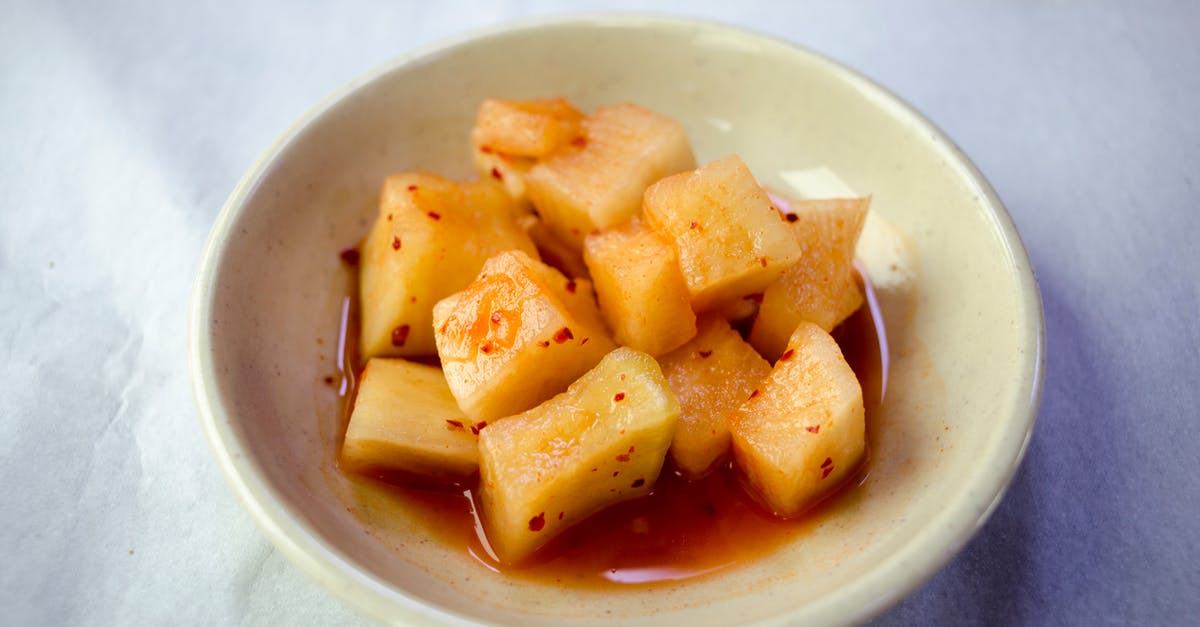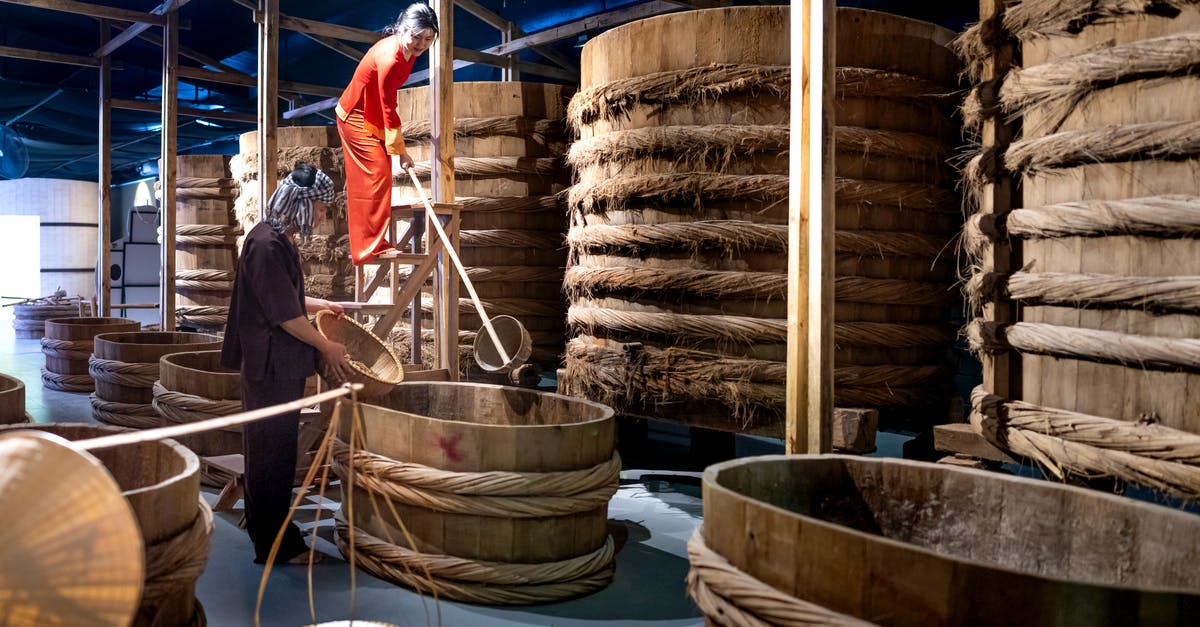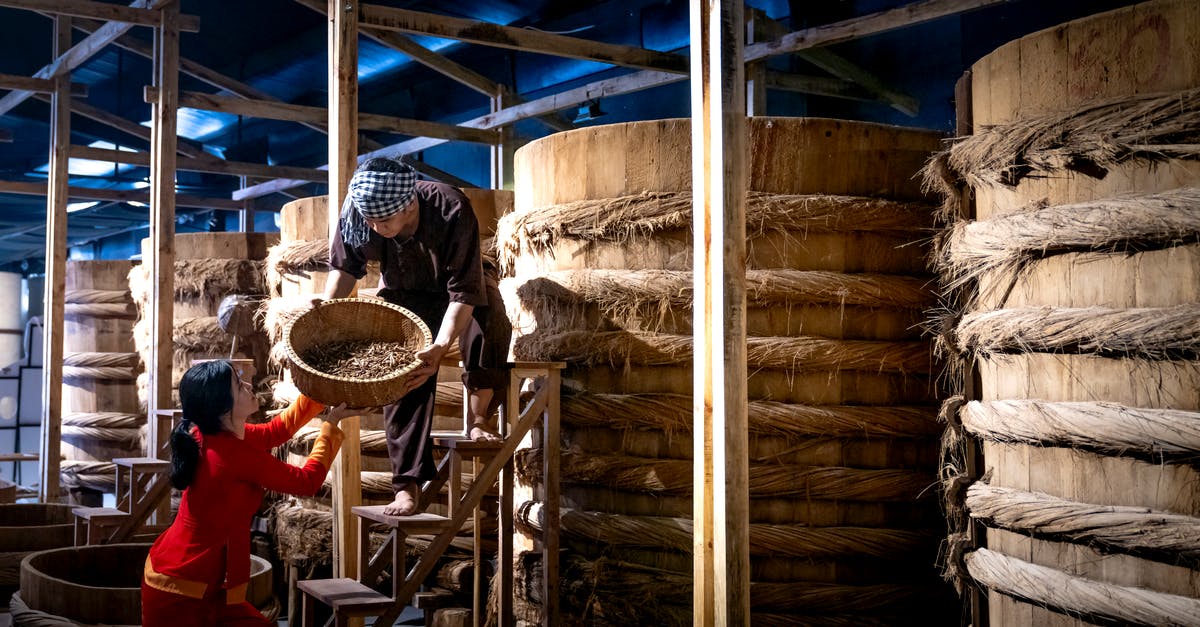How do I tell if my fermented sauce has gone bad?

Related to another question of mine:
I found this recipe for a lacto fermented hot sauce. Basically you take blended up chiles, 2.5% salt, water (not sure if necessary), and oak cubes (I kind of just want to buy a small barrel) and age it all together for 3 months to 2 years and cut it with vinegar. Easy enough.
However, in the answer to my previous question it mentioned that I might end up with "nightmare juice". How do I ensure that my sauce, assuming I use enough salt, has not spoiled (or at least is not unsafe to eat)? If I add garlic or other herbs/spices to the mix, will this change?
Best Answer
The thing about fermentation is that it's a biological process. It's been used for thousands of years to prepare a wide variety of foods, it's extremely easy, and it's (generally) pretty safe if you follow the appropriate guidelines. But biological processes are inherently messy, and things can go wrong. You must be aware of this and able to identify as best you can when a product has fermented unsafely.
One thing to note here is that the related answer's comment about "nightmare juice" is related to the potential consequences of not adding enough salt. This is one of the basic guidelines of lactic fermentation. You need a high enough salt concentration to kill or render inert most of the bacteria that are naturally present in our air and food, while still providing a hospitable medium for the cultures that process food through lactic fermentation. (On the flip side, adding too much salt will prevent much of anything from surviving, in which case you're salting or curing rather than fermenting.) As the food ferments, those cultures will produce enough lactic acid that they'll kill off most anything else trying to grow. But there's always the risk that something hardy enough to survive that environment and potentially harmful to humans will make it into your ferment.
Other guidelines for the process include using clean equipment (to reduce the risk of adding unintended or unsafe bacteria in the first place), making sure your ferment stays submerged (to maintain the salt level throughout; this is less a concern with a blended product like your pepper sauce), and releasing excess gas if you're using a sealed vessel (so it doesn't explode).
Once your ferment is completed, you'll want to check for certain indicators of spoilage or fermentation issues:
- Continued outgassing. Lactic cultures will usually produce a lot of gas during the first week or two, and then slow down; if you're seeing a lot of excess gas produced after about a month of fermentation, it can be a sign that some other opportunistic organism has moved in, and it's best not to risk consuming the product.
- Discoloration. Like canning or other preservation methods, fermentation will usually oxidize the bright chlorophyll greens of certain vegetables (beans, cucumbers, etc.) and it will mute some other colors. But it should not drastically change the color of the food otherwise. If you have pepper puree that's predominantly orange when it goes in, it should be mostly the same after fermentation. Big patches of different color are a major indicator of spoilage.
- Obvious surface scum or growths. Anything that looks like it's growing on the surface of your ferment isn't a good sign; it can indicate unwelcome bacterial or fungal growth and should generally be considered unsafe.
- Unpleasant smell. This can be a little tricky; lacto-fermented foods do have a certain tangy, vinegar-ish smell, and that's to be expected. But if your ferment smells like it's rotting, it probably is.
As far as adding other ingredients... as long as your salt balance isn't affected, this won't usually disturb a ferment too much. As the many varieties of kimchi show, lots of different vegetables can be fermented successfully and eaten safely. But like canning, it's best to work from an established, known-good recipe, particularly if this is the first ferment you've tried on your own. Added ingredients can make it more difficult to detect things like color changes; you may instead wish to find a similar recipe that includes the sort of flavor additions you want, and work from that instead.
Pictures about "How do I tell if my fermented sauce has gone bad?"



Quick Answer about "How do I tell if my fermented sauce has gone bad?"
How do I know if my ferment is bad?
A spoiled ferment will smell rancid, like rotting broccoli. A good ferment will have a pleasant sour smell. Note: If there's Kahm Yeast present it may have a strong smell, but once scraped away it should have a pleasant sour smell if it's not spoiled. A spoiled ferment may be slimy in texture.Can fermented foods go bad?
If the food smells rotten, moldy, or bad, then throw it out. Taste: If the ferment doesn't taste like you expect it to, or if it doesn't taste good, then it's probably gone off. Either it fermented for too long, or it has been contaminated by unwanted bacteria. Either way, you shouldn't eat it.How long is fermented hot sauce good for?
As a rule of thumb, homemade fermented hot sauce will last 2-3 months in the refrigerator. We are confident that they can last much longer, but it is always wise to be on the safe side. Always be sure to inspect your fermented sauce for mold growth or odd smells.Can you get botulism from fermented hot sauce?
Although hot sauces may not necessarily be water-bath canned, they are typically bottled and most likely will have an anaerobic environment that would be conducive to the growth of clostridium botulinum.When Ferments Go Bad - with ATX Hot Sauce
Sources: Stack Exchange - This article follows the attribution requirements of Stack Exchange and is licensed under CC BY-SA 3.0.
Images: ROMAN ODINTSOV, makafood, Quang Nguyen Vinh, Quang Nguyen Vinh
